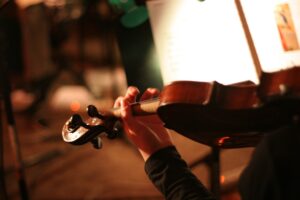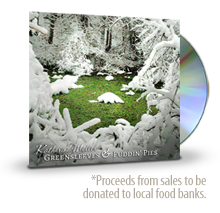Tips & Tricks: The Magnificent 7 – Techniques for Practicing
October 4th, 2016 by Katherine Moller
I spent time a couple of weeks in August and September recording a new CD and here are a few things that I was reminded of while practicing:

- Start slow: The best way to be able to play something fast is to start slowly and make sure you have everything in place before you increase the speed. If you can’t play it slowly, you sure can’t play it fast! I started almost all of my practice sessions playing slowly!
- The metronome is your friend: I spent a lot of time working with my metronome speeding my tunes up making sure that all of the notes were clear. http://www.katherinemoller.ca/tips-tricks-why-the-metronome-should-be-your-best-friend/
- End slow: Even after I got my tunes up to speed, I would still work on them slowly to make sure everything was crystal clear and to make sure that my fingers did not get ahead of me. http://www.katherinemoller.ca/tips-tricks-why-playing-slowly-should-be-your-first-and-last-step/
- Practice with different rhythms to get even sixteenth notes: Lots of my fiddle tunes were made up of sixteenth notes. It is really easy for them to not be really steady, so I practiced them in different rhythms before returning to straight sixteenth notes. This is one of my favourite tricks! You can see the rhythms that I use in this old blog: http://www.katherinemoller.ca/tips-tricks-four-easy-steps-to-playing-sixteenth-notes-evenly/
- Remember to breathe: This is another big one. There were a couple of really tricky passages on the new CD. I have to admit that I was feeling anxious about them, but taking in a deep breath and letting it out as I was playing the passages helped immensely! http://www.katherinemoller.ca/keep-calm-and-play-violin/

- Playing with a drone: When working on my tuning, I often like to play with a drone note. If the tune is in the key of D major for example, I will set my tuner to play the note D for me. I’ll play the whole tune while listening to that note and whether or not all of my notes sound in tune with it.
- Recording yourself: This one is the scariest of all… Recording yourself and listening back. It really amplifies all of your little mistakes and every little squawk and squeak. I need to do this one on a more regular basis to keep myself on my toes! http://www.katherinemoller.ca/tips-tricks-four-reasons-why-a-recorder-should-be-in-every-fiddlers-tool-kit/
The entire recording process was a lot of fun. It was great being able to spend time working on my fiddle tunes and revisiting so many of my tried and true practicing techniques. Feel free to let me know what techniques you have come to use and love!
Comments are closed.


